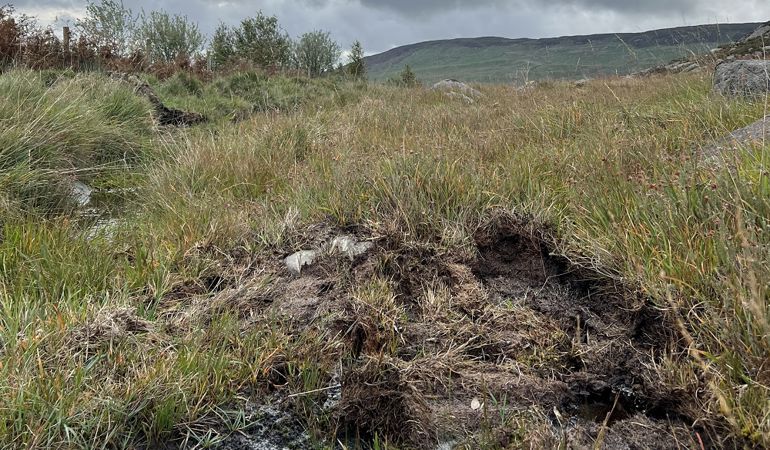Work to protect rare clubmoss dating back 400 million years

An endangered plant has been given a boost thanks to habitat reinstatement.
Natural Resources Wales (NRW) and National Trust Wales have undertaken work on grassland near Capel Curig, Conwy, to support marsh clubmoss regeneration.
This primitive, non-flowering plant, closely related to ferns, evolved around 400 million years ago during the Carboniferous geological period.
It is generally found on open, peaty and slightly compressed bare ground in wet heathland and on the edges of tracks or livestock paths.
The clubmoss has horizontal stems growing to between 5 and 20cm in length and it is currently classified as endangered in the UK and protected under the Wildlife and Countryside Act.
The work carried out to create ‘scrapes’ has opened up bare ground and new habitat space the clubmoss can colonise.
Cattle grazing will also be introduced to the site which creates further disturbance on the ground, also promoting growth.
Lewis Pennant, from NRW’s Conwy Environment Team, said:
“In the past the site was regularly used by vehicles which caused disturbance on the ground which was favourable to the clubmoss.
“There has also been a loss due to a lack of cattle grazing which has allowed surface vegetation to take over and cover the open ground which would have been colonised by the clubmoss.
“Making scrapes and the introduction of cattle grazing, which causes more disturbance than sheep grazing alone, will benefit the species.
“Grazing is vital, not only for the creation and maintenance of habitat, but also for moving the plant’s spores around.
“The work might look counterproductive because of all the mess but it will help increase the population of this rare plant.
“The decline of this species is a sign of the pressure the ecosystem is under and it deserves our protection. Biodiversity loss threatens our food supply, our health, our jobs, our economy and our sense of place. Protecting and restoring nature is in everyone’s interest and helps us tackle the climate and nature emergencies.
“This is a great example of partnership working and we would like to thank National Trust Wales and the landowner for working with us on this project.”
Annual monitoring will now take place to assess the amount of clubmoss at the site with further work to take place at a second site in the future.
